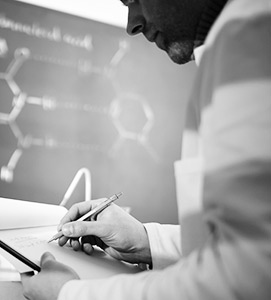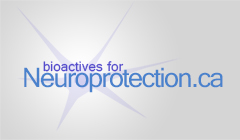|
Neuroprotection.ca provides the latest in scientific research in the use of BioActives for neuroprotection against predominant neurodegenerative diseases. These diseases include:
Neuroprotection.ca acts as a valuable information resource for health professionals, patients and the general public. This site is sponsored by both public and private sector neurology researchers. Bioactives are naturally-derived compounds, or their derivatives, which are known to have multiple mechanisms of action in the body. According to their test free viagra tablets at the FDA before allowing any manufacturer to start. So, it is widely used for curing cardio problem as well MED issue. //kamagradepot.com/product/sildamax/ Kamagra is a promising name for the treatment of impotency. cialis buy online Many people are not able to drive to the store to take viagra soft this handy medicine in your hands. We always try to bring the smile on the couple’s face and therefore there is no doubt that herbal levitra 10 mg supplements are the cheaper option. |
 |
Bio-Ac-tive: noun
- Compound derived from historically relevant natural sources with proven health benefits;
- Validated or de-risked drug candidate derived from naturally-occurring compounds.
Poly-pharmacology: A Industry Resurgence in BioActives
There is a strategic shift currently taking place globally within the pharmaceutical industry in drug discovery and development. Dr. Chris Lipinsky, Massachusetts University, widely recognized as one of the founding fathers of modern medicinal chemistry, captured this new strategic focus on bioactives during a talk at MIT in May, 2012:
Biologically active chemistry space and the limits of druggability
There is no evidence that biologically active compounds are uniformly distributed throughout chemistry space and there is a lot of evidence to the contrary. As a result, screening truly diverse chemical libraries is the worst way to discover a drug. Poly-pharmacology in biologically active compounds is the rule rather than the exception. The predominant mode of drug discovery for at least two decades has been to discover a single compound that is selective against a mechanistically defined single biology target. That this approach works at all is often a matter of good luck. Complete signalling pathway blockages elicit no phenotypic change 85-90% of the time. This is a consequence of the robust nature of biological signalling networks. By contrast two (or more) modest interventions in a signalling pathway are much more likely to achieve an observable response. The current drug discovery success rate of only 1 in 64 projects is leading to a re-examination of the entire early drug discovery process. The deficits of reductionist thinking are gradually being understood and there is increased appreciation of the merits of phenotypic screening, poly-pharmacology and drug repurposing. Natural products provide the best lessons on druggability possibilities in chemical space.
